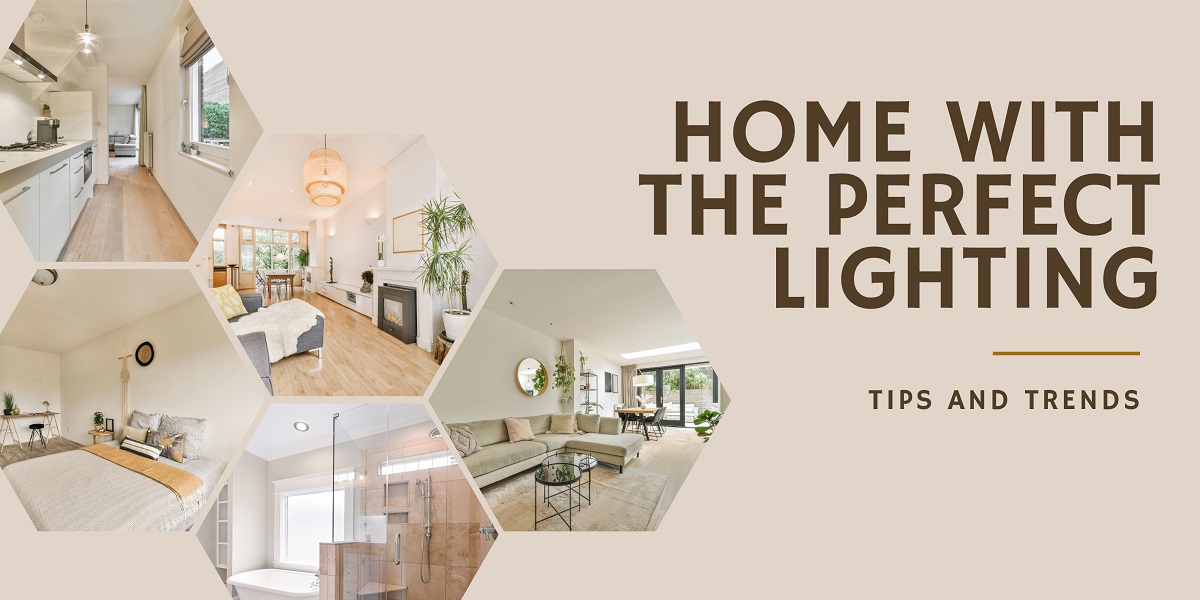Lighting plays a pivotal role in shaping the atmosphere and functionality of your home. The right fixtures can create a cozy, inviting environment or a sleek, modern aesthetic, depending on your preferences. With a thoughtful approach to lighting, you can make any space more appealing and practical. If you're ready to upgrade your interiors, explore options like those found in the Lighting and Studio M collections for inspiration. Let’s focus on actionable tips to help you make the most of your lighting choices.
Tip 1: Layer Your Lighting
Layering is one of the most effective ways to achieve balance and flexibility in a room’s lighting. It involves combining three main types of lighting:
- Ambient Lighting: This provides general illumination, typically from ceiling-mounted fixtures like chandeliers or recessed lights.
- Task Lighting: Designed for specific activities, such as reading or cooking, task lighting includes table lamps, under-cabinet lights, and pendant fixtures.
- Accent Lighting: Used to highlight architectural features or decorative elements, accent lighting can include wall sconces or LED strips.
By layering these three types, you can create a versatile and inviting environment that caters to your needs throughout the day.
Tip 2: Choose the Right Bulbs
The type of bulb you choose greatly impacts the mood and functionality of a room. Here are the key factors to consider:
- Color Temperature: Measured in Kelvin (K), this determines whether a light appears warm or cool. For living spaces, opt for warm white (2700K-3000K) to create a cozy atmosphere. For task areas like kitchens or home offices, choose cool white (3500K-4100K) for better focus.
- Brightness: Lumens measure the brightness of a bulb. Higher lumens are ideal for task areas, while lower lumens work well for ambient settings.
- Energy Efficiency: LED bulbs are long-lasting, energy-efficient, and available in a variety of styles.
Tip 3: Focus on Room-Specific Needs
Every room in your home serves a unique purpose, and the lighting should reflect that.
- Living Room: Use dimmable overhead fixtures for ambient lighting and add floor or table lamps to create a relaxing vibe. Wall sconces or picture lights can highlight artwork or decor.
- Kitchen: Combine bright overhead lighting with under-cabinet task lights for precision in cooking and preparation areas.
- Bedroom: Opt for soft, layered lighting with bedside lamps and dimmable ceiling fixtures to create a tranquil atmosphere.
- Bathroom: Ensure vanity areas have ample task lighting with fixtures mounted at eye level to reduce shadows.
Tip 4: Experiment with Statement Pieces
Lighting can also serve as a design statement. A bold chandelier or a striking pendant light can act as a focal point in any room. Look for unique designs that reflect your personal style while complementing your overall decor.
For a modern look, consider sculptural fixtures with clean lines. In traditional settings, ornate chandeliers can add a touch of elegance. Just remember to maintain balance—an oversized fixture might overwhelm a small room, while a tiny one might get lost in a spacious area.
Tip 5: Optimize Natural Light
Before adding artificial lighting, make the most of the natural light available in your home. Open up windows, use sheer curtains, and place mirrors strategically to reflect sunlight and brighten your space. Natural light not only enhances the ambiance but also reduces your dependence on artificial sources during the day.
Tip 6: Incorporate Smart Lighting
Smart lighting systems allow you to control brightness, color, and schedules with ease. Whether you’re using voice commands or a smartphone app, these systems provide convenience and energy efficiency. Additionally, they can adapt to your lifestyle by automatically adjusting based on the time of day.
Tip 7: Pay Attention to Scale and Placement
The placement and size of your lighting fixtures can dramatically affect a room's appearance. Here are some quick guidelines:
- Overhead Fixtures: Ensure the fixture is proportionate to the size of the room. For example, a chandelier should be about 12 inches narrower than the table or space it hangs over.
- Table Lamps: The bottom of the shade should be at eye level when seated to avoid glare.
- Wall Sconces: Install sconces about 60 inches from the floor for optimal lighting and aesthetics.
Tip 8: Think About Dimmers
Dimmers offer an easy way to adjust the mood of a room. By controlling the brightness, you can transition a space from functional to intimate. Install dimmers in areas like living rooms, dining rooms, and bedrooms for added versatility.
Tip 9: Use Lighting to Highlight Features
Accent lighting is a great way to draw attention to architectural details, artwork, or decorative elements. Spotlights, track lighting, or even LED strips can add depth and character to your space by emphasizing these features.
Tip 10: Keep It Simple
While it’s tempting to go all out with elaborate fixtures, sometimes less is more. Stick to designs that align with your decor theme, and avoid overcrowding your space with too many lighting elements. A few well-chosen pieces can make a bigger impact than an overly complicated setup.
Wrapping Up
The right lighting can breathe new life into your home, transforming it into a more beautiful, functional, and enjoyable space. By following these tips and staying mindful of your personal style, you can create a lighting setup that complements your lifestyle and enhances your interiors.
Explore the latest trends, experiment with layering, and don’t shy away from bold choices. With a little planning, your lighting can become the centerpiece of your home’s design.
